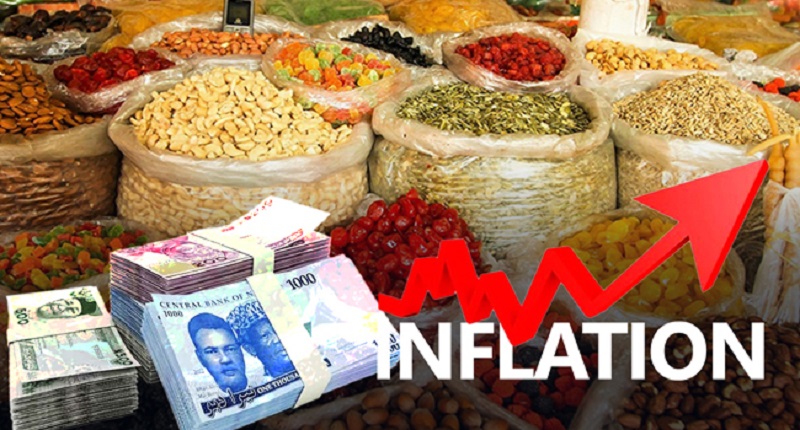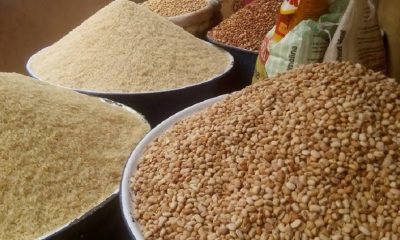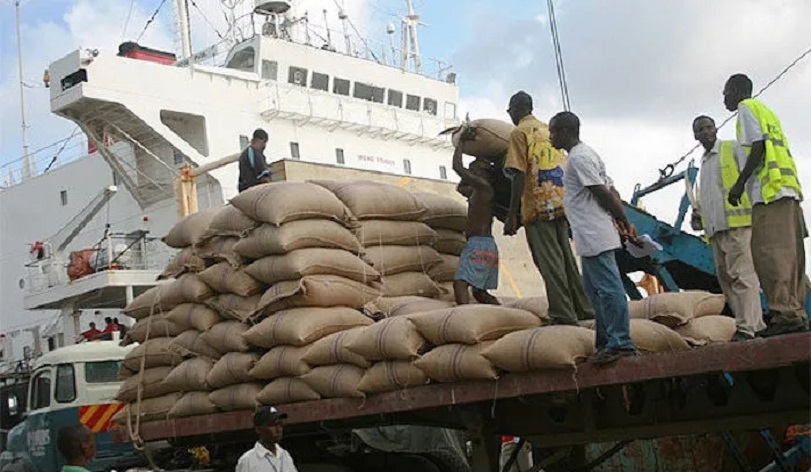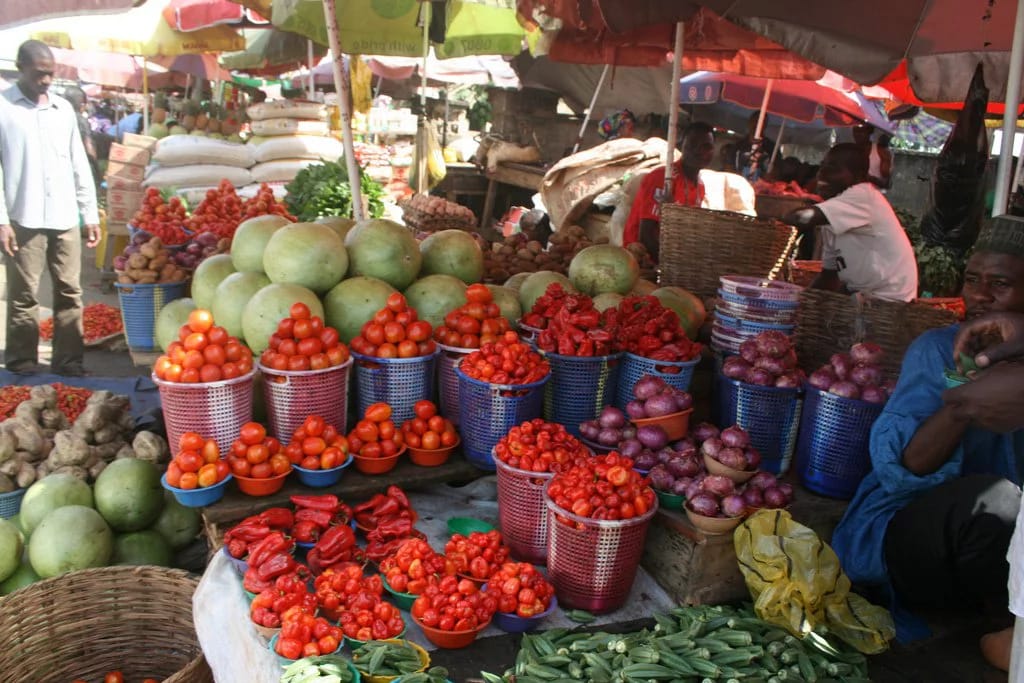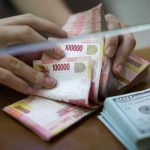Economy
Drought Pushing Food Prices up Sharply in East Africa
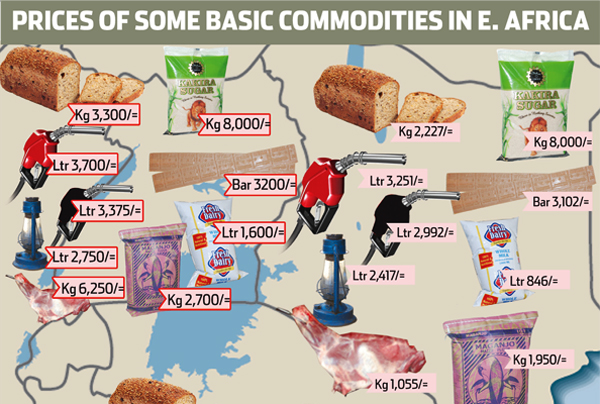
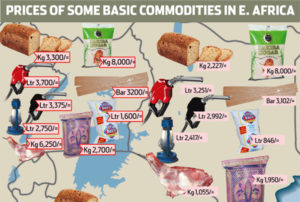
By Dipo Olowookere
Drought throughout East Africa has sharply curbed harvests and pushed the prices of cereals and other staple foods to unusually high levels, posing a heavy burden to households and special risks for pastoralists in the region.
Local prices of maize, sorghum and other cereals are near or at record levels in swathes of Ethiopia, Kenya, Somalia, South Sudan, Uganda and the United Republic of Tanzania, according to the latest Food Price Monitoring and Analysis Bulletin (FPMA).
Inadequate rainfall in most areas of the sub-region has put enormous strain on livestock and their keepers. Poor livestock body conditions due to pasture and water shortages and forcible culls mean animals command lower prices, leaving pastoralists with even less income to purchase basic foodstuffs.
“Sharply increasing prices are severely constraining food access for large numbers of households with alarming consequences in terms of food insecurity,” said Mario Zappacosta, FAO senior economist and coordinator of the Global Information and Early Warning System.
The trends in East Africa, where prices of staple cereals have doubled in some town markets, stand in marked contrast to the stable trend of FAO’s Food Price Index, which measures the monthly change in international prices of a basket of traded food commodities.
The difference is due to the drought that is hammering the sub-region, where food stocks were already depleted by the strong El Niño weather event that ended only last year. Poor and erratic rainfall in recent months, crucial for local growing seasons, are denting farm output.
Somalia’s maize and sorghum harvests are estimated to be 75 percent down from their usual level, and some 6.2 million people, more than half of the country’s total population, now face acute food insecurity, with the majority of those most affected living in rural areas.
Soaring prices
The FPMA Bulletin tracks food price trends on a granular level and in local terms, with an eye to flagging instances where the prices of essential food commodities increase sharply or are abnormally high.
In Mogadishu, prices of maize increased by 23 percent in January, and. the increase was even sharper in the main maize producing region of Lower Shabelle. Overall, in key market towns of central and southern Somalia, coarse grain prices in January have doubled from a year earlier.With an earlier than usual depletion of household stocks during the coming lean season and preliminary weather forecasts raising concerns for the performance of the next rainy season, prices are likely to further escalate in the coming months.
Maize prices in Arusha, United Republic of Tanzania, have almost doubled since early 2016, while they are 25 percent higher than 12 months earlier in the country’s largest city, Dar Es Salaam.
In South Sudan, food prices are now two to four times above their levels of a year earlier, exacerbated by ongoing insecurity and the significant depreciation of the local currency.
In Kenya, where eastern and coastal lowlands as well as some western areas of the Rift Valley all suffered below-average rainfall, maize prices are up by around 30 percent, with the increase somewhat contained somewhat thanks to sustained imports from Uganda.
Cereal prices aren’t the only ones rising. Beans now cost 40 percent more in Kenya than a year earlier, while in Uganda – where maize prices are now up to 75 percent higher than a year earlier – and increasing around the key border trading hub of Busia, the prices of beans and cassava flour are both about 25 percent higher than a year ago in the capital city, Kampala.
Double jeopardy for pastoralists
Drought-affected pastoral areas in the region face even harsher conditions.
In Somalia, goat prices are up to 60 percent lower than a year ago, while in pastoralist areas of Kenya the prices of goats declined by up to 30 percent over the last twelve months.
Shortages of pasture and water caused livestock deaths and reduced body mass, prompting herders to sell animals while they can, as is also occurring in drought-wracked southern Ethiopia. This also pushes up the prices of milk, which is, for instance, up 40 percent on the year in Somalia’s Gedo region.
Lower income from livestock collides with higher prices for cereals and other staple foods in a wrenching shock to terms of trade for pastoralist households. A medium-sized goat in Somalia’s Buale market was worth 114 kilograms of maize in January 2016, but at today’s prices can be traded for only 30 kilograms of the grain.
FAO uses its proprietary FPMA Tool, accessible to the public online, to monitor local markets and gather data for more than 1350 domestic price series in 91 countries around the globe in order to produce its Indicator of Food Price Anomalies.
Economy
FrieslandCampina, Two Others Erase N26bn from NASD OTC Bourse

By Adedapo Adesanya
Three stocks stretched the bearish run of the NASD Over-the-Counter (OTC) Securities Exchange by 1.21 per cent on Friday, December 19, with the market capitalisation giving up N26.01 billion to close at N2.121 billion compared with the N2.147 trillion it ended a day earlier, and the NASD Unlisted Security Index (NSI) dropping 43.47 points to 3,546.41 points from 3,589.88 points.
The trio of FrieslandCampina Wamco Nigeria Plc, Central Securities Clearing System (CSCS) Plc, and NASD Plc overpowered the gains printed by four other securities.
FrieslandCampina Wamco Nigeria Plc lost N6.00 to sell at N54.00 per unit versus N60.00 per unit, NASD Plc shrank by N3.50 to N58.50 per share from N55.00 per share, and CSCS Plc depleted by N2.91 to N33.87 per unit from N36.78 per unit.
On the flip side, Air Liquide Plc gained N1.01 to close at N13.00 per share versus N11.99 per share, Golden Capital Plc appreciated by 70 Kobo to N7.68 per unit from N6.98 per unit, Geo-Fluids Plc added 39 Kobo to sell at N5.50 per share versus N5.11 per share, and IPWA Plc rose by 8 Kobo to 85 Kobo per unit from 77 Kobo per unit.
During the trading day, market participants traded 1.9 million securities versus the previous day’s 30.5 million securities showing a decline of 49.3 per cent. The value of trades went down by 64.3 per cent to N80.3 million from N225.1 million, but the number of deals jumped by 32.1 per cent to 37 deals from 28 deals.
Infrastructure Credit Guarantee Company (InfraCredit) Plc finished the session as the most active stock by value on a year-to-date basis with 5.8 billion units valued at N16.4 billion, followed by Okitipupa Plc with 178.9 million units transacted for N9.5 billion, and MRS Oil Plc with 36.1 million units traded for N4.9 billion.
The most active stock by volume on a year-to-date basis was still InfraCredit Plc with 5.8 billion units worth N16.4 billion, trailed by Industrial and General Insurance (IGI) Plc with 1.2 billion units sold for N420.7 million, and Impresit Bakolori Plc with 536.9 million units traded for N524.9 million.
Economy
Naira Crashes to N1,464/$1 at Official Market, N1,485/$1 at Black Market
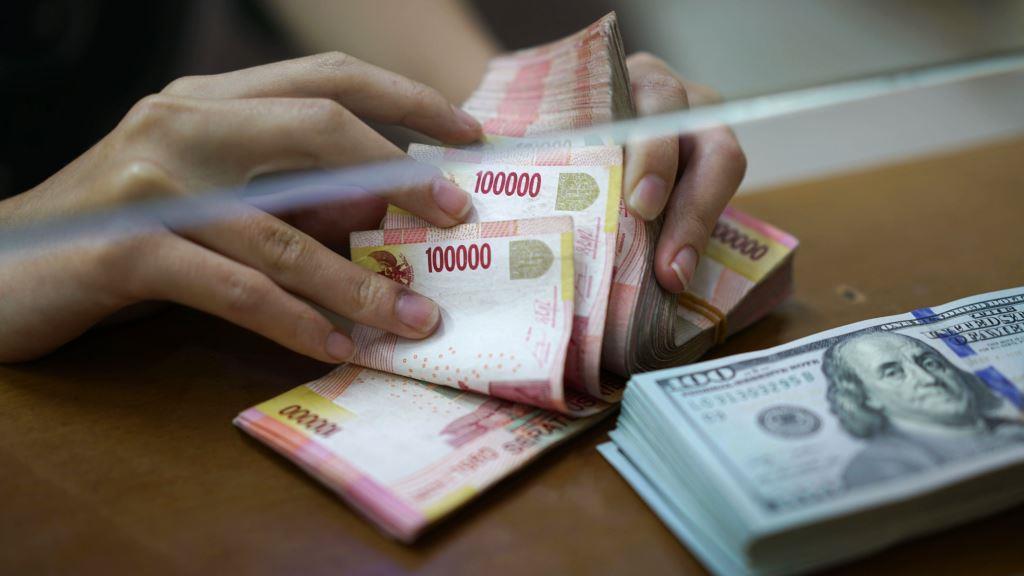
By Adedapo Adesanya
It was not a good day for the Nigerian Naira at the two major foreign exchange (FX) market on Friday as it suffered a heavy loss against the United States Dollar at the close of transactions.
In the black market segment, the Naira weakened against its American counterpart yesterday by N10 to quote at N1,485/$1, in contrast to the N1,475/$1 it was traded a day earlier, and at the GTBank forex counter, it depreciated by N2 to settle at N1,467/$1 versus Thursday’s closing price of N1,465/$1.
In the Nigerian Autonomous Foreign Exchange Market (NAFEX) window, which is also the official market, the nation’s legal tender crashed against the greenback by N6.65 or 0.46 per cent to close at N1,464.49/$1 compared with the preceding session’s rate of N1,457.84/$1.
In the same vein, the local currency tumbled against the Euro in the spot market by N2.25 to sell for N1,714.63/€1 compared with the previous day’s N1,712.38/€1, but appreciated against the Pound Sterling by 73 Kobo to finish at N1,957.30/£1 compared with the N1,958.03/£1 it was traded in the preceding session.
The market continues to face seasonal pressure even as the Central Bank of Nigeria (CBN) is still conducting FX intervention sales, which have significantly reduced but not remove pressure from the Naira. Also, there seems to be reduced supply from exporters, foreign portfolio investors and non-bank corporate inflows.
President Bola Tinubu on Friday presented the government’s N58.47 trillion budget plan aimed at consolidating economic reforms and boosting growth.
The budget is based on a projected crude oil price of $64.85 a barrel and includes a target oil output of 1.84 million barrels a day. It also projects an exchange rate of N1,400 to the Dollar.
President Tinubu said inflation had plunged to an annual rate of 14.45 per cent in November from 24.23 per cent in March, while foreign reserves had surged to a seven-year high of $47 billion.
Meanwhile, the cryptocurrency market was dominated by the bulls but it continues to face increased pressure after million in liquidations in previous session over accelerating declines, with Dogecoin (DOGE) recovering 4.2 per cent to trade at $0.1309.
Further, Ripple (XRP) appreciated by 3.9 per cent to $1.90, Cardano (ADA) rose by 3.5 per cent to $0.3728, Solana (SOL) jumped by 3.4 per cent to $126.23, Ethereum (ETH) climbed by 2.9 per cent to $2,982.42, Binance Coin (BNB) gained 2.0 per cent to sell for $853.06, Bitcoin (BTC) improved by 1.7 per cent to $88,281.21, and Litecoin (LTC) soared by 1.2 per cent to $76.50, while the US Dollar Tether (USDT) and the US Dollar Coin (USDC) traded flat at $1.00 each.
Economy
Crude Oil Prices Climb as US Blocks Venezuelan Tankers

By Adedapo Adesanya
Crude oil prices edged up on possible disruptions from a US blockade of Venezuelan tankers as the market waits for news about a possible Russia-Ukraine peace deal.
Brent futures rose 65 cents or 1.1 per cent to $60.47 per barrel while the US West Texas Intermediate (WTI) futures expanded by 51 cents or 0.9 per cent to $56.66 per barrel. Both Brent and WTI were down about 1 per cent this week after both crude benchmarks fell about 4 per cent last week.
US President Donald Trump said he was leaving the possibility of war with Venezuela on the table, noting that there would be additional seizures of oil tankers near Venezuelan waters after the US seized a sanctioned oil tanker off the coast of Venezuela last week.
The American President this week ordered a “blockade” of all sanctioned oil tankers entering and leaving Venezuela, in the US’ latest move to increase pressure on Nicolas Maduro’s government, targeting its main source of income. The pressure campaign on President Maduro has included a ramped-up military presence in the region and more than two dozen military strikes on vessels in the Pacific Ocean and Caribbean Sea near Venezuela, which have killed at least 90 people.
President Trump has also previously said that US land strikes on the South American country will soon start.
Meanwhile, US Secretary of State Marco Rubio on Friday said that the US is not concerned about an escalation with Russia when it comes to Venezuela, as the Trump administration builds up military forces in the Caribbean.
This development comes as President Trump seeks an end to the unending war between Ukraine and Russia that is heading towards its fourth year.
European Union leaders decided on Friday to borrow cash to loan 90 billion Euros to Ukraine to fund its defense against Russia for the next two years as Russian President Vladimir Putin offered no compromise on Friday on his terms for ending the war in Ukraine and accused the European Union of attempting “daylight robbery” of Russian assets.
Ukraine, meanwhile, struck a Russian “shadow fleet” oil tanker in the Mediterranean Sea with aerial drones for the first time.
Earlier this week, the US and Ukraine both signaled progress in negotiations about a peace agreement during talks in German capital city of Berlin. The US is now reportedly offering Ukraine security guarantees modeled on NATO’s Article 5 mutual defense pledge.
-

 Feature/OPED6 years ago
Feature/OPED6 years agoDavos was Different this year
-
Travel/Tourism9 years ago
Lagos Seals Western Lodge Hotel In Ikorodu
-

 Showbiz3 years ago
Showbiz3 years agoEstranged Lover Releases Videos of Empress Njamah Bathing
-
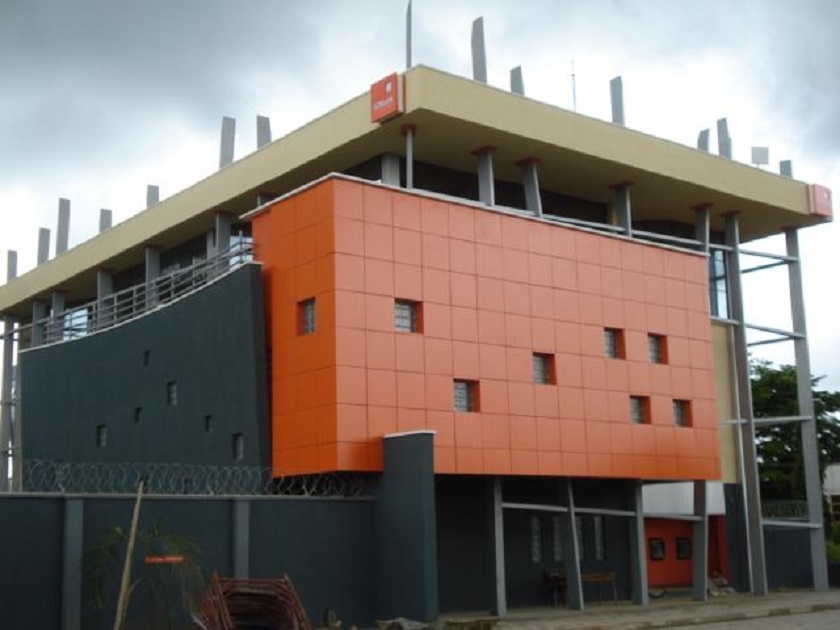
 Banking7 years ago
Banking7 years agoSort Codes of GTBank Branches in Nigeria
-

 Economy3 years ago
Economy3 years agoSubsidy Removal: CNG at N130 Per Litre Cheaper Than Petrol—IPMAN
-

 Banking3 years ago
Banking3 years agoFirst Bank Announces Planned Downtime
-
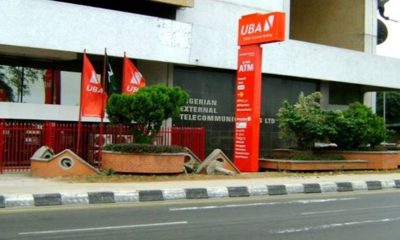
 Banking3 years ago
Banking3 years agoSort Codes of UBA Branches in Nigeria
-

 Sports3 years ago
Sports3 years agoHighest Paid Nigerian Footballer – How Much Do Nigerian Footballers Earn





